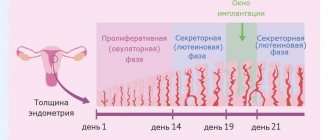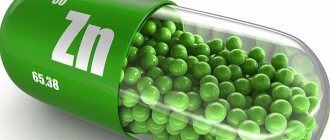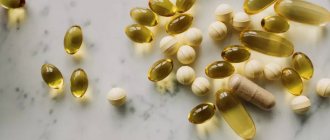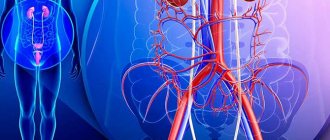Brittle bones are a fairly common problem for many, especially older people. After all, over the years, the body loses the normal balance of calcium in the body. Hence – bone fractures, fragility of hair and nails. Calcium is responsible for all these functions, and vitamin D3 helps it to be properly absorbed.
It is almost impossible to find in foods; it is produced in the body when exposed to sunlight. But in central Russia, sunlight is also in short supply. You have to take special preparations containing calcium and this vitamin.
When is it prescribed?
The drug is used in the following cases:
- treatment and prevention of rickets;
- treatment of osteoporosis;
- diseases of the small intestine;
- cirrhosis of the liver;
- postoperative conditions (surgery on the stomach and small intestine);
- therapy for hypoparathyroidism;
- treatment of pseudohypoparathyroidism;
- in cases of mineral metabolism disorders in people over forty-five years of age;
- with intolerance to dairy products.
Sources of vitamin D3
The peculiarity of this substance is that our body receives it from two sources:
- Firstly, it is produced in our skin under the influence of ultraviolet rays. This is why walking on sunny days is so beneficial. It is not necessary to be under the scorching sun. In the shade of trees the same effect will occur. Just a 20-minute walk with your face and palms open is enough to provide yourself with cholecalciferol for several days.
- Secondly, the source of this substance is food. It is found in significant quantities in fish, caviar and eggs.
When not to take
The drug is not prescribed for:
- hypervitaminosis;
- hypercalcemia;
- calcifications in the kidneys;
- renal osteodystrophy;
- thyrotoxicosis;
- hypersensitivity to the substance.
It is prescribed very carefully for atherosclerosis, heart failure, active form of tuberculosis, sarcoidosis, hyperphosphatemia, phosphates in the kidneys, organic heart damage, acute and chronic kidney and liver diseases, diseases of the stomach and intestines, gastric and duodenal ulcers, pregnancy, lactation, hypothyroidism.
What causes vitamin D deficiency?
Vitamin D deficiency in many Russian residents is due to:
- location in the northern temperate zone (above 42 degrees north latitude)
- limited exposure to the sun (office work, driving cars)
- eating meat from animals that have not been exposed to the sun (farm)
- use of sunscreens
- chronic diseases (obesity, intestinal pathology, taking a large number of medications)
You can determine the level of vitamin D in your body by taking the following test:
25-OH vitamin D (25-hydroxycalciferol) (amount)
How to use
Usually the bottles come with droppers, but if there are no droppers, you need to use eye pipettes. One drop of such a pipette contains 625 IU of the substance. The drop is dissolved in a spoon with water or milk. To prevent rickets, healthy babies are given one drop every day from the eighth day.
Premature babies are given two drops every day. Prescribed to children of the first and second year, it is especially important to give the remedy in winter, when there is a minimum amount of sunlight.
If rickets has already developed, give from two to eight drops per day for a year. For vitamin D3 deficiency, take two drops per day. For alabsorption syndrome, take five to eight drops.
For hypoparathyroidism, take from sixteen to thirty drops per day, depending on the severity of the disease. During treatment, calcium levels in the blood should be monitored.
Vitamin D standards
Considering the different units of measurement, the recommended level is:
60 - 100 ng/ml
150 – 250 nmol/l
To convert from ng/ml to nmol/l you need ng/ml * 2.5 = nmol/l
Example: 30 ng/ml * 2.5 = 75 nmol/l
Russian Association of Endocrinologists
considers
the optimal concentration
of vitamin D in the blood of an adult to be 30-100 ng/ml,
deficiency is
20-30 ng/ml,
deficiency
is less than 20 ng/ml.
According to data presented at the 10th European Congress on Menopause and Andropause (Madrid, 2015), vitamin D levels in obese patients in Russia:
less than 20 ng/ml - 35%
20-30 ng/ml - 30%
more than 30 ng/ml - 35%
Daily Values for Vitamin D
according to the recommendation of the American Society of Endocrinology (2011).
| Age group | Recommended daily dose, IU | Maximum permissible level of consumption, IU |
| Infant, 0 - 6 months | 400 | 1000 |
| Infant, 7 - 12 months | 400 | 1500 |
| Children 1 - 3 years old | 600 | 2500 |
| Children 4 - 8 years old | 600 | 3000 |
| Children 9 - 17 years old | 600 | 4000 |
| Adults 18 – 70 years old | 600 | 4000 |
| Adults over 70 years old | 800 | 4000 |
| Pregnancy and lactation | 800 | 4000 |
Prophylactic dose
vitamin D (when you can not detect it in the blood and take it calmly) is considered to be 4,000 IU per day.
Without medical supervision, it is not recommended to take vitamin D at a dose of 10,000 IU for more than 6 months. (Russian Association of Endocrinologists)
It is almost impossible to overdose on vitamin D. For example, in Holland, an elderly couple (90 and 95 years old) accidentally took a single dose of cholecalciferol 2,000,000 IU each.
Doctors monitored them for 2 months and did not identify any symptoms of overdose or toxicity. The maximum blood concentration of its form of 25-OH-vitamin D on day 8 was 210 and 170 ng/ml, respectively, which is slightly higher than its target values.
Side effects
The drug is usually well tolerated, but sometimes unwanted side effects occur:
- allergy;
- hypercalcemia;
- hypercalciuria;
- lack of appetite;
- headache;
- polyuria;
- myalgia;
- arthralgia;
- hypertension;
- arrhythmia;
- renal failure;
- exacerbation of tuberculosis.
If they appear, you should stop treatment and seek help.
Vitamin D oil or water based
Calciferol is a fat-soluble substance, so special additives are used to dissolve it in water. You can find a list of them among the excipients in the drug instructions. Stabilizers are also added to such preparations so that the solution retains its shape and preservatives, which are most often ethyl alcohol. Auxiliary components are contained in tiny doses, so you shouldn’t be afraid of this. The aqueous solution should be stored in the refrigerator.
There are cases when only an aqueous solution is suitable for children. These are babies with diseases of the intestines and pancreas who do not digest fats well.
The oil solution contains only oil and cholecalciferol. In this case, oil acts as a natural preservative. Oil-based preparations are stored at room temperature.
A healthy, non-allergic child is given any option to prevent deficiency of this substance. In any case, your pediatrician should answer the questions: which vitamin D is better - water-based or oil-based, how to give it and up to what age, and what is the correct dosage.
Zinaida Rassadina
Pediatrician, 14 years of experience
Overdose
Sometimes, due to improper use of the drug, an overdose occurs.
Vitamin D3 hypervitaminosis manifests itself in the following symptoms:
- diarrhea or constipation;
- dry mouth;
- thirst;
- frequent urination;
- anorexia;
- nausea and vomiting;
- taste of metal in the mouth;
- weakness, fatigue;
- cloudiness in the urine;
- bone pain;
- drowsiness;
- arrhythmia;
- hypertension;
- skin itching;
- rarely – psychosis.
It happens that it comes to chronic intoxication due to an overdose.
It is expressed in:
- renal and heart failure;
- hypercalcemia;
- hypertension;
- growth disorders in children.
If such manifestations occur, you should stop taking the medication as soon as possible and seek help. Usually hemodialysis is performed, saline solution, furosemide, and electrolytes are administered intravenously. A diet low in calcium is prescribed.
Indications for use
Let's consider the main conditions in which it is necessary to replenish vitamin D3 for preventive or therapeutic purposes.
In children:
- Disturbances in the growth and development of bones and joints, skeleton.
- Risk of rickets.
- Signs of vitamin deficiency.
Important! Before taking it, it is recommended to take a blood test to confirm the level of the substance. Based on the results of the examination, the doctor will make an individual prescription, taking into account the patient’s age, indications, place of residence, type of activity, concomitant pathologies, etc.
In adults:
- Presence of signs of vitamin D deficiency.
- Pregnancy and breastfeeding (to prevent pathologies of fetal development).
- Complaints of muscle cramps, spasms.
- Osteoporosis, joint damage, bone fractures.
- Calcium and phosphorus deficiency, poor absorption.
- Bone marrow diseases.
- Complex treatment of cardiovascular system, gastrointestinal tract.
- Enterocolitis.
- Comprehensive treatment of systemic lupus erythematosus, skin tuberculosis, type 2 diabetes, psoriasis.
- Prevention of occupational diseases (in metallurgy).
- Hypoparathyroidism.
- Prescription of glucocorticosteroids.
- Decreased immunity, frequent seasonal diseases.
Important! The use of vitamin D without tests and doctor's prescription is possible only for preventive purposes.
How does it interact?
Vitamin D3 should not be taken with food. With simultaneous use with diuretics, hypercalcemia develops. Together with cardiac glycosides, there is a possible risk of arrhythmia.
If you take antacids and vitamin D3 together for a long time, intoxication may develop.
There should be a two hour interval between taking sodium fluoride and vitamin D3. The interval between taking hetracyclinone and vitamin D3 is three hours.
Taking other forms of vitamin D3 can lead to hypervitaminosis.
Vitamin D deficiency
A lack of vitamin D in the body can lead to the development of:
- diseases of the cardiovascular system
- immunodeficiency, allergies, psoriasis, bronchial asthma, rheumatoid arthritis
- periodontal disease
- tumors of the large intestine, mammary glands, ovaries, prostate
- chronic fatigue, depression, insomnia
- decreased muscle strength leading to a risk of falls
- decreased motility and number of morphologically normal sperm (male factor infertility)
- risk factor for premature birth, fetopathies (less than 20 ng/ml)
Achieving a vitamin D level of 50 ng/ml (125 nmol/l) reduces the risk of developing:
| % | |
| Rakhita | 100 |
| Ostemalacia (softening of bone tissue) | 100 |
| Cancer in general | 75 |
| Breast cancer | 50 |
| Ovarian cancer | 25 |
| Colon cancer | 65 |
| Kidney cancer | 65 |
| Uterine cancer | 35 |
| Diabetes mellitus type 2 | 50 |
| Perelomov | 50 |
| Falls in women | 70 |
| Multiple sclerosis | 50 |
| Myocardial infarction | 50 |
| Vascular diseases | 80 |
| Preeclampsia | 50 |
| Caesarean section | 75 |
| Infertility | 70 |
Vitamin D is important during pregnancy.
Its deficiency is associated with the risk of developing gestational diabetes mellitus, premature birth, preeclampsia, and various intrauterine developmental defects.
There is not a single case of teratogenic (leading to the development of tumors) effect of vitamin D in the world.
Some guidelines
While taking the drug, you should constantly carefully check the calcium level in your blood. When taken by children, the dosage must be carefully observed to avoid hypervitaminosis. If children are given the drug for a long time, growth may be delayed.
Breastfed children growing up in areas with reduced insolation may have a greater need for vitamin D3.
In the elderly, the absorption of vitamin D3 worsens, and renal failure may develop.
The drug does not affect driving.
Prevention
For the purpose of prevention, the officially recommended dose of vitamin D is taken, which is 800 units. 1-2 times a week. This amount is sufficient to maintain normal phosphorus-calcium metabolism. The safe dose for prevention is 2000 units; such a dose can be prescribed by a specialist if there are certain indications.
Attention!
For medical indications, a therapeutic dose is indicated, which is also determined by the attending physician. Such doses are prescribed for patients with diabetes mellitus, cancer, obesity, atherosclerosis, and also in the presence of a pronounced inflammatory process in the body.
The medical literature contains data on the improvement of the condition of cancer patients and the recovery of patients with significantly reduced immunity who took high doses of vitamin D (up to 5000 IU). In any case, the therapeutic dosage is determined only by a specialist.
The doctor recommends a therapeutic dosage and number of doses based on test results (vitamin D and calcium levels are determined). Patients with gastritis, peptic ulcers, or kidney stones are prohibited from taking the drug without a doctor's prescription. In addition, with frequent bone fractures and early diagnosed osteoporosis (patient age under 45-50 years), taking any vitamins and minerals without consulting a doctor is also prohibited.
Israeli children's vitamin D3
On our website you can buy an oil-based product from two Israeli manufacturers. It is available in drops and is suitable for babies from birth. One drop contains 200 IU of vitamin. The recommended daily dose for children is 2 drops. Ask your pediatrician how many drops to give your child.
The drug from Tiptipot is available in a dark glass bottle with a drip dispenser and a safety cap with a volume of 15 ml. The drug from Life is available in a soft plastic bottle with a 20 ml drip dispenser.









